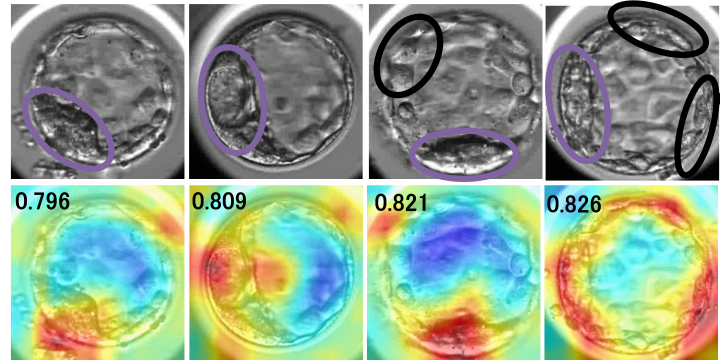Evaluation of artificial intelligence using time-lapse images of IVF embryos to predict live birth


Research question
Can artificial intelligence (AI) improve the prediction of live births based on embryo images?
Design
The AI system was created by using the Attention Branch Network associated with deep learning to predict the probability of live birth from 141,444 images recorded by time-lapse imaging of 470 transferred embryos, of which 91 resulted in live birth and 379 resulted in non-live birth that included implantation failure, biochemical pregnancy and clinical miscarriage. The possibility that the calculated confidence scores of each embryo and the focused areas visualized in each embryo image can help predict subsequent live birth was examined.
Results
The AI system for the first time successfully visualized embryo features in focused areas that had potential to distinguish between live and non-live births. No visual feature of embryos were visualized that were associated with live or non-live births, although there were many images in which high-focused areas existed around the zona pellucida. When a cut-off level for the confidence score was set at 0.341, the live birth rate was significantly greater for embryos with a score higher than the cut-off level than for those with a score lower than the cut-off level (P < 0.001). In addition, the live birth rate of embryos with good morphological quality and confidence scores higher than 0.341 was 41.1%.
Conclusions
The authors have created an AI system with a confidence score that is useful for non-invasive selection of embryos that could result in live birth. Further study is necessary to improve selection accuracy.